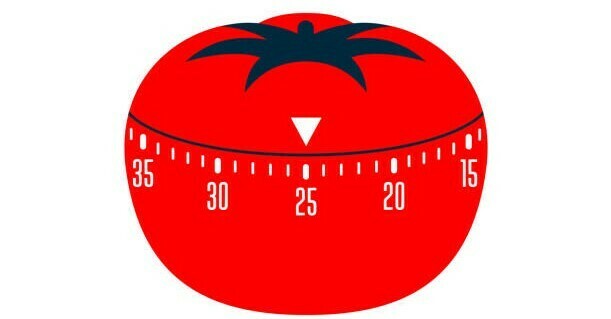

Cirillo says that "cheaters" keep working but in a more informal way.


During a break, you should not sit and brainstorm or even put away the dishes. What you are not allowed to do is take on another task or think. What should you do during this break, which may be just five minutes or as long as 30 minutes depending on where you are with your pomodoros? Cirillo suggests walking, deep breathing or just drinking a glass of water. To guide practitioners through the internal shift, the Pomodoro Technique includes six objectives. The inner process of the Pomodoro Technique is to understand the principles behind the method, not just practice it. The problem is internal: Your mind tells you to scroll through Instagram even when Instagram is not dinging to alert you. You may take on a different project or do something else like call a friend or check social media. Usually, we run away, which can mean working without breaks or not working at all. "The common factor is you have to learn to stop." Recognize the predator. "I can use time to simplify things," says Cirillo. When you feel the fear of a deadline, ask yourself how you can use time to reduce the fear. This is why the Pomodoro Technique includes breaks from work rather than powering through because our minds need time to reorganize. Thus, the Pomodoro Technique was created to deal with your mind.Ĭirillo says to ask time, "How can you help me?" Because the same element that causes the anxiety is the element that can solve it.Ĭhanging our mindset about time can start with the idea that we use time rather than the other way around. "Today, we have several sources of distraction." But the most powerful source of distraction is your mind, which interrupts you a lot when you are under stress. If you’re working on a computer, you can use the online Tomato Timer to simplify your workflow."This problem is related to how our mind works," he says.Limit distractions: switch your phone to do not disturb, close the office door or let your flatmates know that you do not want to be disturbed right now.Make a list of tasks that you want to complete in one session.The Pomodoro Technique also helps you not to overwork yourself. Without distractions you can stay focused on the task. If you’re pulled out of your work by an email, a phone call or a knock on the door, it takes you an average of 11 minutes to get back to your task. Moreover, eliminating all distractions and focusing on one task (even for short periods of time) will help you getting it done much faster. You don’t need a lot of equipment or preparation, you can start any time. The Pomodoro Technique has become so popular partly because of its simplicity. What should you do during Pomodoro breaks? As I said: Nothing that has to do with your work! The aim is to clear your head and recharge your batteries. But then it’s really time to put down your pen and take a break. You can write down keywords so you don’t lose your train of thought. After your timer goes off, finish what you were working on. It’s easy to be tempted to just keep going because you’re feeling good, but the short breaks are essential to this technique. Try to stick to the 25 minutes of intense study. These breaks are important for your brain because it needs time to recharge to stay focused during the next Pomodoro phase. Try to avoid doing anything related to your work during your breaks. This is what the Pomodoro cycle looks like:Īfter the last session, you have a long break. Repeat this process four times, and then take a longer break. This is followed by another 5-minute break. After a 5-minute break, the second Pomodoro phase starts (another 25 minutes of focused work). As soon as the timer goes off, you have a short break in which you can go to the toilet, eat something or maybe make some coffee. One phase is 25 minutes of focused study.


 0 kommentar(er)
0 kommentar(er)
